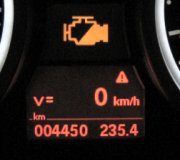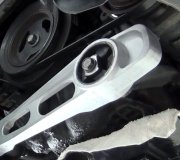The old three speeds had issues with the governor sticking from debris in the valve body causing this exact issue.
Did they change the fluid and filter?
Roy
DESCRIPTION
The governor assembly is fastened to the transaxle transfer shaft. It consists of a governor body, weight, valve, and shaft.
OPERATION
The governor meters hydraulic pressure, and this metered pressure is used to signal the transmission when it is time for a shift to occur. It does this by balancing governor pressure on one side of a shift valve, and throttle pressure on the other. When governor pressure increases far enough to overcome the throttle pressure on the valve, a shift occurs.
With the gearshift selector in a forward driving range, line pressure flows from the manual valve and down to the governor valve. When the output shaft starts to rotate with vehicle motion, the governor weight assembly will start to move outward due to centrifugal force. As the weight is moved outward, it will pull the valve with it until the land of the valve uncovers the line pressure port. As the port begins to become uncovered, governor pressure is metered. As the vehicle's speed continues to increase, the weight assembly will be at a point at which governor pressure is acting on the left side of the reaction area of the valve. This produces sufficient force to compress the spring and allow the outer weight to move out against the outer governor body retaining ring. At a very high speed, the governor valve will be opened as far as possible. In this condition, it is possible for governor pressure to meet, but not to exceed, line pressure. Generally governor pressure ranges from 0-100 psi from idle to maximum speed, and rises proportionally with the increase in output shaft speed. Governor pressure and throttle pressure, are acting upon the shift valves to determine when a shift will occur. Governor pressure is a direct indication of road speed, and throttle pressure is an indication of engine load. When both parameters have been met by the throttle and governor pressures, an upshift or downshift will occur.
Tuesday, June 5th, 2018 AT 4:39 AM



